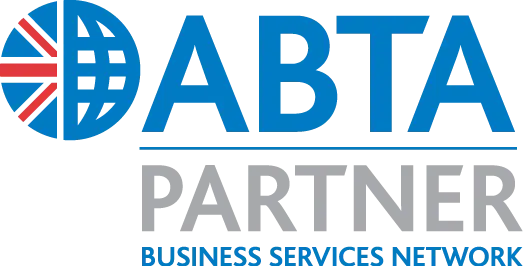
Driving in the Netherlands.
Honest, simple and no hidden fees.
- Free Cancellation
- Excess Protection
- 24/7 Support
- Fair Fuel Policy
The flat country.
The Netherlands provides some fantastic scenery for a driving holiday; it is a notoriously flat country. The landscape is dotted with windmills, canals, and colourful flowers, including tulips filling the fields.
As with every other foreign country, driver etiquette, road systems, road signs, and the driving environment are different to what you may be used to in your own country, so it is important that you are aware of the different legislation and things to look out for so that you have a safe driving experience.
Why not read our Netherlands travel guide? You may also like to view information about popular destinations in the Netherlands.
Tips for driving in the Netherlands
Which side of the road do they drive on?
Drive on the right, overtake on the left. Buses have right of way when leaving bus stops in built-up areas. Trams have right of way, unless otherwise indicated by traffic lights. Beware of large numbers of cyclists, particularly in Amsterdam.
Be careful at roundabouts, drivers are permitted to overtake on the right when entering or driving round a roundabout
Seat belts
If fitted, seat belts must be worn at all times by all occupants of the vehicle. If front seat belts are not fitted, only children taller than 135cm may travel in the front seat.
Driving with children
If travelling in the front seat, children under 18 and shorter than 135cm must use a child restraint system suitable for their size. Restraint systems must meet the safety approval of ECE 44/03 or 44/04.
If travelling in the rear seat, children under 18 and shorter than 135cm must use a child restraint system suitable for their size.
Children under 3 may not travel in a car unless in an appropriate child restraint. A child under 3 may only travel in the front passenger seat if using a rear facing child seat with the airbags deactivated.
Blood alcohol limit
The blood alcohol limit is 50mg alcohol per 100ml blood. If you have been driving for less than 5 years, a lower limit of 20mg alcohol per 100ml blood applies.
A lower limit of 20mg per 100ml applies to new drivers for the first five years.
Can I use a mobile?
It’s illegal to use a mobile phone when driving. Police can issue on the spot fines for this.
Reflective vests, triangles & other essentials
The use of either hazard warning lights or a warning triangle is compulsory in an accident/breakdown. However, a warning triangle should always be carried as warning lights may become damaged or inoperative and can’t always be seen on bends.
Parking
Parking is not allowed next to black and white or yellow curbs. The majority of parking spots use a pay and display system.
On the spot fines
The Dutch police are authorise to issue and collect on the spot fines. In the case of illegal parking, the police can impose and collect a fine or have the vehicle towed. Vehicles can also be confiscated in cases of heavy excess of speed and drink driving.
Horns and headlights
The use of horns at night is prohibited and should only be used in moderation during the day.
At night it is illegal to drive with only sidelights. The use of dipped headlights during the day is highly recommended.
What should I do if I breakdown?
If you breakdown or are in an accident, you must put on your hazard lights and/or place the reflective triangle 30m behind the vehicle to warn other drivers. Call the supplier who will be able to advise you further.
It is recommended you contact ourselves at the same time to ensure you follow the correct procedure.
What should I do if I have an accident?
If you’re in an accident, you MUST notify the Police and the car rental supplier and get an accident report for insurance purposes. Failure to do so may result in you footing the whole bill. It is recommended that you contact us at the same time to ensure you follow the correct procedure.
Book nowPlaces to hire in Netherlands
- Alkmaar
- Almere
- Amersfoort
- Amsterdam
- Amsterdam Central Station
- Amsterdam Schiphol Airport (AMS)
- Apeldoorn
- Apeldoorn Zwolseweg
- Arnhem
- Breda
- Den Haag Centraal Rail Station
- Diemen
- Eindhoven
- Eindhoven Airport (EIN)
- Emmeloord
- Emmen
- Groningen
- Groningen Airport (GRQ)
- Haarlem
- Harderwijk
- Leeuwarden
- Maastricht
- Maastricht Aachen Airport (MST)
- Rotterdam (North)
- Rotterdam Rail Station
- Rotterdam The Hague Airport (RTM)
- Schiphol Airport Railway Station
- The Hague
- Tilburg
- Utrecht
- Utrecht Central Rail Station
- Zeeland
- Zwolle
Average customer rating for car hire in Netherlands
(4.9 out of 5.00) based on 42 responses to our customer survey.
Speed limits
- Motorways - 130 kph / 80mph
- Open roads - 80/100 kph / 50/62mph
- Built up areas - 50 kph / 31mph
Phone numbers
- Police - 112
- Fire - 112
- Ambulance - 112
Useful phrases
- Danger - Gevaar
- Diesel - Diesel
- Exit - Afslag
- Filling Station - Tankstation
- Petrol - Benzine
- Prohibited - Verboden
- Right of way - Recht van overpad
- Roadworks - Wegwerkzaamheden
- Slow - Traag
Fuel
Credit cards are acceptable throughout the Netherlands.





